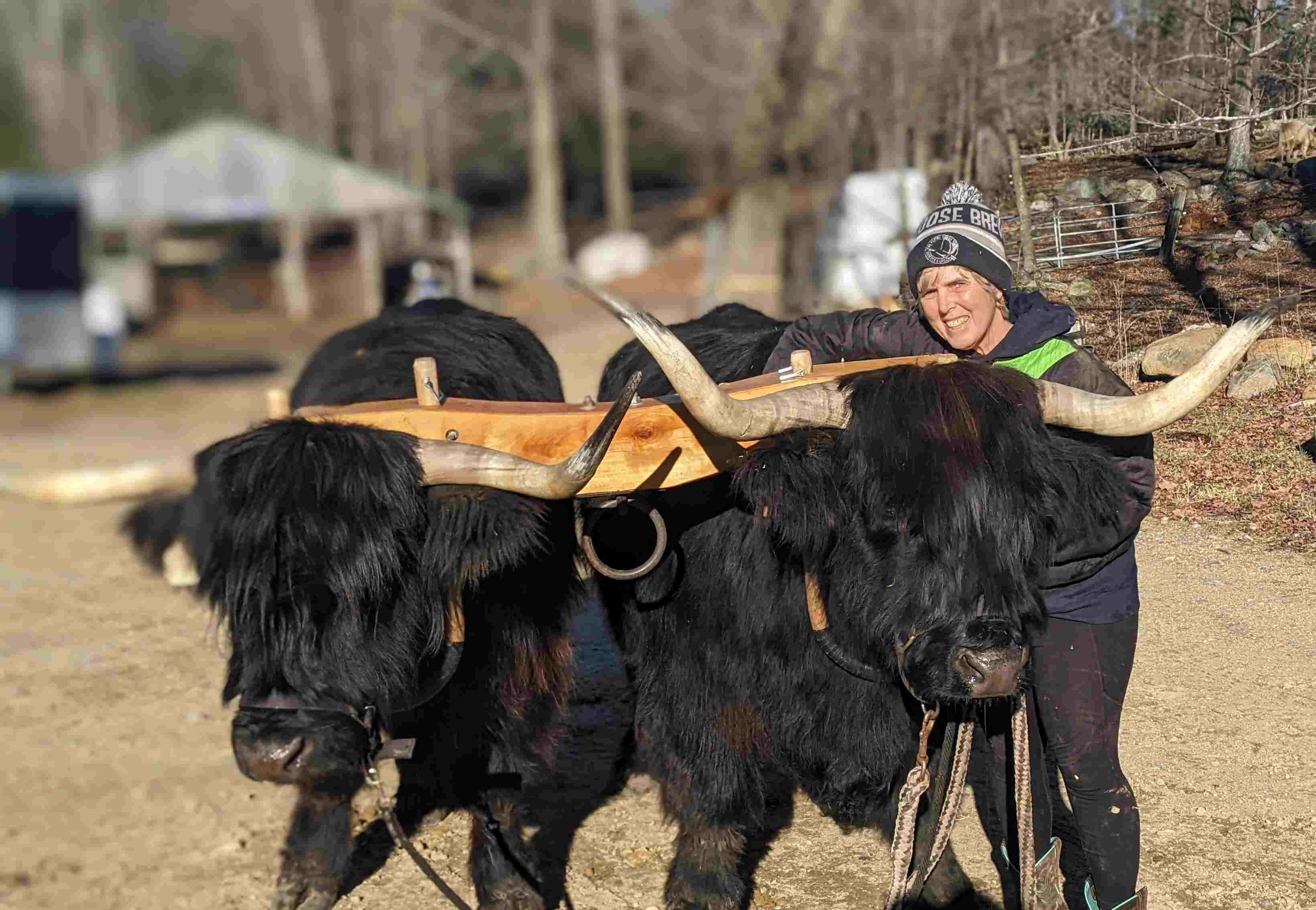Raising Beef Cattle With Respect
posted on
August 5, 2023
Twenty years ago, I was a vegetarian. Now I eat meat, but not just any meat. Unless I know the beef was raised on the right kind of farm, I’ll go vegetarian.
My definition of healthy meat is meat from animals that have been raised humanely on small farms – not in 100,000-animal feed lots where they are pumped full of antibiotics and extra hormones. One of my customers drove by one of those feed lots in Iowa. “I could smell it for miles,” Susan told me. “The stench was overwhelming. Then I saw the woeful critters crowded in pens. It was nauseating.” Those feedlots are why I was a vegetarian. I could not bear to think that the meat I ate came from cattle that suffered.
Then we bought Highland cattle to eat brush in our fields. When I sent two steers to the butcher, I decided it was time to eat meat again. After all, I knew how these guys were raised. I knew they had a good life, a non-feed lot life. And the meat tasted delicious, much better than the store-bought, feed-lot-raised variety. But it’s not easy. Even after 20 years of raising cattle and sending some to be processed, I’m always sad.
Is it possible to love animals and raise them to become meat?
Most food production involves death. Harvesting vegetables and grain kills thousands of small and not-so-small animals. Every harvest season, rabbits, groundhogs, and birds are killed when big combines cut wheat to make cereal and flour. Yet, to stay alive, we all have to eat. We don’t get to know insects, so it’s easier to ignore their deaths for the sake of creating food, but does that make it OK to kill them?
A Pet Cow?
Farmers aren’t supposed to develop affection for their animals, but some creatures, like my black ox, Topper, have stolen my heart. I manage to divert a few cattle from the beef program, but Miles Smith Farm can’t survive as just a petting zoo or a school for training oxen. Sometimes I can sell my picturesque Highland cattle to people who will keep them as pets. I also dream up other non-meat activities for our farm, such as our day camp or holiday fun featuring Rudolph the Red-Nosed Rein-Steer. But we depend on plump, delicious steers to nourish our customers.
Naming every animal in my herd connects me to each one. That makes it all the harder to send them away for processing. But it’s my way of showing respect and affection for them, no matter their role on the farm.
Difficult Choices
It’s delightful when Brittany has a calf but difficult when Sylvester, the steer, is sent for processing. I know the animals sent away have lived a good life and are calm. I chose a particular slaughterhouse for its quick and painless methods. One second, the animal is there; the next, they are gone.
I want to know the animal on my plate was raised humanely and processed without pain. The decision to send a steer away is never easy, but each time I honor the animal by thanking it for all it gave in life and death.
I’ll explore alternatives to eating meat in next week’s column.



